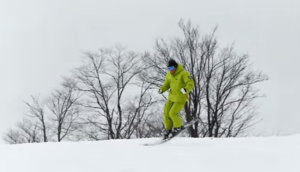What To Do When You First Get Back On Skis
19 Oct 2016, Posted by in Latest NewsThe day has come when the ski resorts have finally started spinning the chairlifts for the general public. The excitement in the air is so strong it feels you can feel it vibrate around you. You boot up and take those first few steps to grab your jacket, goggles, gloves, phone and skis, the boots feel heavy and clunky. It’s been months since those things have been on your feet. You grab your skis, drop them on the snow (hopefully you have had them tuned and prepped before this point), as you click in, your heart beats a little faster, who doesn’t love that sound (or the sound of snow creaking when you’re walking on it)?! You’re in the lift line, you do your proverbial slide one foot in front of the other move, maybe look down at your boots and contemplate buckling them a little tighter, but man, they already feel like their in a vice. It’s finally your turn, the chair swings around the bull-wheel, scoops you up, you start chatting up the person next to you because you can hardly contain your excitement. What feels like an eternity (are we there yet?!), you arrive at the top.
After a moment defining push with your poles, your skis glide forward and get pulled down the hill by gravity, now what?! Ever have that split second freak out moment about whether you remember to turn or not? You are not alone. You sort out how to make the skis go left and right and maintain some degree of control as you get to the bottom of the lift (pat yourself on the back, job well done). Now this is the moment that most skiers get wrong. Their confidence shoots through the roof, adrenaline and excitement block all logic and rational thinking. They try to mimic that first descent but only faster and with more edge angles, trying to fast forward to that moment last season where you were ripping.
Your first moments back on snow are crucial for setting the foundation for your technique for the season. You have to help your body remember the sequence of movements, neuro-muscular connections need to be reactivated after having been dormant for so long. The first thing any successful skier does when they get back on snow, is work on their balance. Hold the eye-rolling back for just a second. Balancing on a surface that is slippery, while you are moving at speeds of triple or quadruple that of walking, while you are locked into a boot that limits ankle articulation and are wearing gear that adds additional 25-30lbs to your mass – it’s complicated, especially after being off snow for several months. There are a lot of factor to get just right moving forward, now factor in direction changes, slope angle changes, you are asking your brain and body to process and coordinate a lot of things at a very accelerated rate.
When we work on balance, we work in 3 planes. Fore and aft is the first one. We want to control how movement our center of mass does over our feet and legs (base of support). Keeping it fixed over your feet is not ideal. Our goal when we try to establish and manage our balance in this plain is to continuously adjust our center of mass so we can distribute pressure along the length of the ski (tip to tail) as needed. A great exercise to help out with this is to shuffle both feet forward and backwards as you execute a turn. Another one is to move the pressure points on the soles of your feet from your forefoot to middle to back of the foot without losing shin contact with the tongue of the boot. Dolphin Turns which are a series of hops, where you pop the tips of the skis up off the snow by leveraging the tails of the skis then landing back onto the tips of the skis. How to do a Dolphin Turn. This is a challenging exercise because of its dynamic nature. It forces you to put your body in a position where you can maximize movement out of the ankle joint as well as maximize flexion and extension movements from other joints in the body.
Tune back in for more exercises on how to hone in your balance in the lateral plane.


